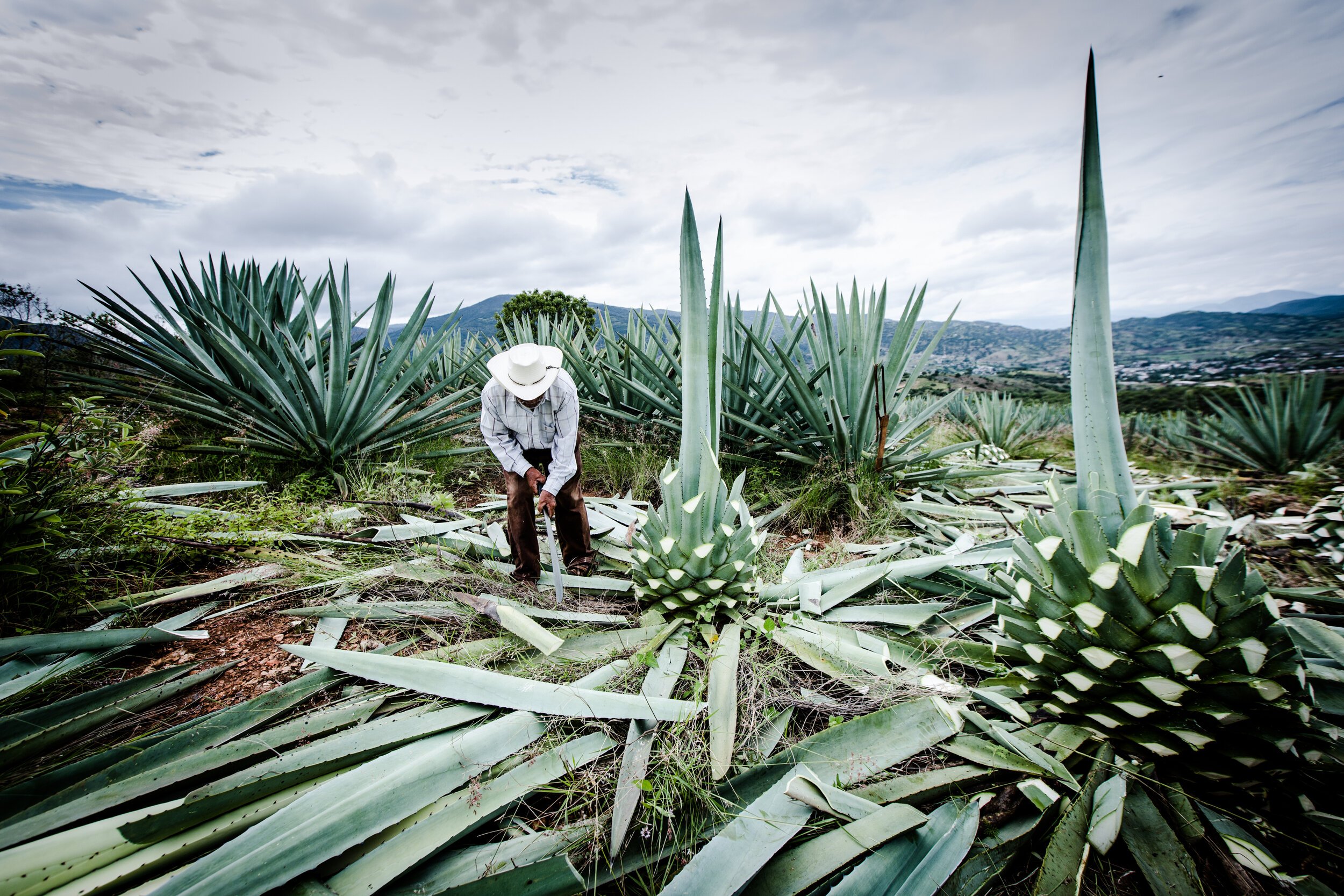THE DIFFERENCE BETWEEN MEZCAL AND TEQUILA
The famous explanation about the difference between mezcal and tequila is: all tequila is mezcal, but not all mezcal is tequila. Tequila must be made in specific regions of Mexico and from blue agave. The core difference between mezcal and tequila is that mezcal is made with different types of agave. The most common varieties of agave used for mezcal are tobala, tobaziche, tepeztate, arroqueno and espadin. These are the most common agave and accounts for up to 90% of mezcal.
Image by Ghinwa Daher
The other difference is that mezcal and tequila are distilled differently. They are both products from the harvested core of the agave plant, also known as the piña. Tequila is typically produced by steaming the agave inside industrial ovens before being distilled two or three times in copper pots. Mezcal is cooked according to a traditional and artisanal method inside earthen pits that are lined with rocks and filled with wood and charcoal before being distilled in clay pots. This is where the smoky tasting notes in the mezcal comes from.
Mezcal earthen pit
Both tequila and mezcal are aged inside oak barrels, however, the aging is different. Tequila has three varieties: 0-2 months is blanco/silver/plato, 2-12 months is reposado, 1-3 years is anejo. Mezcal is grouped into categories by age: 0-2 months is joven/blanco/abacado, 2-12 months is reposado, anejo should be aged at least 1 year.
Image by Long Island Lou Tequila



